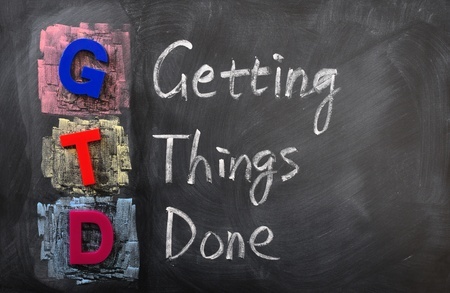
Uncover how the Getting Things Done framework and Leadership Influence Skills equip professionals to accomplish whatever goals they set for their work and inspire teams.
Mastering productivity and leadership is critical for success in today’s dynamic world. The Getting Things Done (GTD) methodology and Leadership Influence Skills offer actionable strategies to optimize personal efficiency and inspire others to achieve collective goals. This blog explores these concepts, emphasizing their relevance and integration for personal and professional growth.
Understanding Getting Things Done (GTD)
Getting Things Done is a productivity methodology developed by David Allen. It helps people manage tasks and projects by capturing ideas, clarifying actions, and organizing tasks to reduce mental clutter and enhance focus.
Core Principles of GTD:
Capture Everything: Collect all tasks, ideas, and commitments into a trusted system.
Clarify Actions: Break tasks into actionable steps and determine their importance.
Organize Tasks: Categorize tasks by context, priority, and deadlines.
Reflect Regularly: Reflect on tasks and projects to keep track of the goals.
Engage Effectively: Focus on the most important tasks at any time.
Benefits of Getting Things Done
Increased Productivity: It streamlines workflows and reduces distractions.
Less Stress: It clarifies by organizing tasks and commitments.
Improved Focus: Helps prioritize actions that meet goals.
More Efficiency: It optimizes time management and resource allocation.
Sustainable Progress: It ensures that there is consistent progress by reviewing regularly.
What Are Leadership Influence Skills?
Leadership Influence Skills include guiding, inspiring, and convincing people to work together to attain a mutual goal. These skills are a necessary component for the leader to be able to collaborate, initiate change, and produce results.
Critical Components of Leadership Influence Skills
Visionary and Clear: Clearly articulate a compelling vision that inspires others.
Empathy: Understand and show appreciation for the needs and views of your team members.
Effective Communication: Clearly and confidently convey ideas.
Credibility and Trust: Establish reliability and integrity
Collaboration: Establish teamwork and shared goals
Importance of Leadership Influence Skills
Inspiring Action: Motivate teams to act and work toward goals enthusiastically
Driving Change: Overcome resistance and build consensus for new initiatives
Building Relationships: Increase trust and rapport among team members
Enhancing Decision-Making: Involve diverse perspectives in making informed choices
Resolving Conflicts: Negotiate disagreements constructively in order to maintain harmony.
Combining Getting Things Done and Leadership Influence Skills
Integrating Getting Things Done with Leadership Influence Skills creates a comprehensive approach to personal and professional effectiveness. While GTD focuses on managing tasks and priorities, influence skills enhance your ability to inspire and collaborate with others.
The Synergy:
Efficient Goal Setting: Use GTD to outline actionable steps and influence skills to align your team with these goals.
Improved Delegation: Organize tasks on GTD and communicate those to group members using your influence skills.
Enhanced Focus: Use GTD when prioritizing, and use leadership influence to get team members to care about efforts on critical initiatives.
Stronger Collaboration: Combine productivity with influence skills to inspire teamwork.
Sustained Momentum: Reflect on momentum using GTD and ensure continued engagement through influence skills.
Hands-on Applications
At the Workplace:
Organize Projects and Deadlines Systematically Using GTD.
Practice Applying Leadership Influence Skills to energize the team and align efforts towards organizational goals.
Use Both Combined Toward creating productive as well as collaborative work cultures.
In Personal Development: Apply GTD to work through personal tasks and pursue important life goals efficiently. Exercise the influence skills to build deep personal relations and overcome challenges. This approach builds a balanced and fulfilling life.
Success Stories in Real-Life Application
Case Study 1: Improving Team Productivity
A team leader at a marketing agency found it challenging to manage multiple client projects effectively. Using the Getting Things Done methodology, they streamlined workflows and reduced task overlap. Using Leadership Influence Skills, they motivated team members to take ownership of their roles. The result? Significant improvement in project delivery timelines and team morale.
Case Study 2: Personal Transformation
A mid-career professional working and at home had trouble keeping all things balanced. GTD helped her get all the things in order that needed to be accomplished. Concurrently, influence skills helped me communicate my needs to get tasks completed and learn to delegate more effectively. The results were a much easier schedule with improved work and family relations.
How to Get Started
Learn the Basics: Learn from any resource, book, online course or training on GTD and Leadership Influence Skills.
Practice Regularly: Apply these skills consistently to build confidence and effectiveness.
Seek Feedback: Ask for input from colleagues and peers to refine your approach.
Track Progress: Use GTD reviews and leadership feedback to measure improvements.
Final Thoughts
Mastering Getting Things Done and Leadership Influence Skills is the key to excellence in any domain. Optimizing personal productivity and inspiring others can unlock your full potential and create a lasting impact. Start your journey today and experience the transformative power of these tools in achieving your goals and leading with influence.

